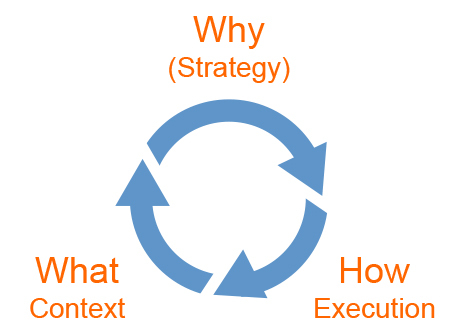It is now abundantly clear that incremental innovation only keep the Sharks away long enough to come up for air and that it takes breakthrough innovation to swim out into the Blue Ocean, where opportunities are plentiful. Changing market and technology positions usually requires a renewal of the organization and that is when a strong design philosophy becomes integral to success.
Cross-functional and multi-disciplinary collaboration usually leads to incremental innovation, with collective agreement to the lowest common denominator. A strong visionary individual is needed to create breakthrough innovation, however, strong visionaries come with high risk. The annals of new product development are littered with failure, - think Fisker Automotive, Web-Van and Better Place. Imagine if there could now be an alternative?
Instead of relying on single professionals fighting their way to the top, how about developing cultures that foster comprehensive personal growth, as well as more balanced leaders. Individuals able to question current dogma and formulate new paradigms ask the better "WHYs", that can, in turn, drive future progress.
The domain of personal growth offers concepts that correspond well with how strategies are developed in organizations. Lifespring, Steven Covey's Seven Habits of Highly Effective People and The Golden Circle concept all advocate 'Be - Do - Have' (Why - How - What.) The first requirement is to know who one is and then to do what one is good at, thus achieving the results that attach to that process along the way.
Most people see this as the "wrong way" and they buy things or do something in hope of 'becoming' someone else in the process. We propose that the equation works both ways, "Why - How - What" and "What - How - Why. The Stanford Prison Experiment, conducted by Philip Zimbardo, revealed that our surroundings (the have) mold us far more than we might like to admit.
This is why it is paramount that our future leaders experience a comprehensive upbringing and education, exposed to all facets of the creative economy. Building analytical as well as intuitive skills and mastering leadership. Not to become a corporate hero, but instead, as the Vikings say, to be "The first among equals."
One might ask how Design Philosophy and knowing the Why's can increase breakthrough innovation, while ensuring applicability and user adoption. Studies conducted at Hanyang University in South Korea, show that clarity reduces ambiguity, which then leads to increased, informed risk taking. Teams that developed a strong design philosophy (Why,) executed well (How) and delivered new breakthrough concepts that were deemed worthy of investment (What.)
So what are the key elements of Why, How and What? Studies at Stanford University and with the INDEX: Award have shown that Design Quality, as defined by nine Design Quality Criteria, (DQC): Strategy (Philosophy, Structure and Innovation), Context (Social/Human, Environmental and Viability) and Execution (Process, Function and Expression) act as a lead indicator for design-centered organizations' stock valuation. These criteria align well within the 'Why' (Strategy), 'How' (Execution) and 'What' (Context).
When 'the first among equals' creates breakthrough innovative concepts together with his or her team, a strong WHY can help the team stay focused and energized, enabling them to forge ahead. As Friedrich Nietzsche famously said" 'He who has a 'why' to live can bear almost any 'how.'
